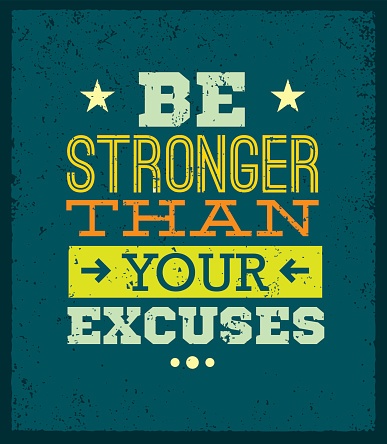 Have you ever thought of doing something big for those special birthday milestones? I can easily recall all the excitement that came with my 16th birthday, for behind-the-wheel freedom, being able to call myself an adult at 18, and we all know the free feeling of legality when turning 21. Then there are those later-year birthdays, such as 30, 40, and 50, that tend to be looked upon as a negative thing with the “it’s all downhill from here,” mentality.
Have you ever thought of doing something big for those special birthday milestones? I can easily recall all the excitement that came with my 16th birthday, for behind-the-wheel freedom, being able to call myself an adult at 18, and we all know the free feeling of legality when turning 21. Then there are those later-year birthdays, such as 30, 40, and 50, that tend to be looked upon as a negative thing with the “it’s all downhill from here,” mentality.
In the last few years, however more men and women have taken it upon themselves to look at these latter milestones as a time to accomplish a longtime goal or to cross off an item from their bucket list. Personally, I am enjoying this new outlook and challenge! I would like to share with you an experience from one of our own NIFS members, Kelly, who decided to take up the Dopey Challenge at Walt Disney World as she turns 50 this month.
The Dopey Challenge is a four-day event in Orlando, Florida, that consists of four races within four days: a 5K on Thursday, 10K on Friday, a half marathon (13.1 miles) on Saturday, and a full marathon (26.2 miles) on Sunday. Sounds pretty crazy, right? Well let me be the first to tell you, Kelly not only completed it but also did far better than she expected. She crushed her goals and was able to complete all four races injury free. And throughout the different races, she felt stronger than she had ever anticipated. But don’t just hear it from me; read on below for her personal account of this crazy experience.
Could you give us a little background about yourself?
“This past year has been a year of milestones for me. My husband, Kevin, and I celebrated 25 years of marriage last July. We also celebrated 10 years as Kristen’s parents (same day). In addition to being a wife and mother, I have worked at the NCAA for 16 years. I am also active in my church, teaching Sunday school and helping with our youth group. Exercise is something I definitely need for balance. I started running about 20 years ago. I had just turned 30, and although I was not overweight, could still visibly see a need for exercise. To start out, I was mainly doing cardio on a stair-stepper we had in our garage, but one Saturday I decided to go for a run to mix it up a little. I was hooked. Before I knew it, I completed the Mini-Marathon (the first of many half marathons) and eventually completed my first marathon at age 40.”
What made you decide to sign up for the Dopey Challenge?
“I had heard about the Dopey Challenge soon after it began in 2013. I had done two marathons, so with my 50th birthday on the horizon, I thought it would be the perfect challenge. There was only one person that I mentioned it to who did not think it was a crazy idea: my husband. (I guess you start to think alike when you have been married for so long.) That made the idea of doing it even more enticing—something that we would do together. I could hardly wait.”
What did you do in order to prepare for the series of races?
“I signed up for the Dopey in April and knew that I wanted to lose some weight and gain some strength. At the time, I did do strength training twice a week on my own in my home, but felt I wasn’t getting much benefit out of it. I decided to see what NIFS had to offer and came across the Ramp Up to Weight Loss program. That is where I met Masie. She came up with a great program that helped me reach my goal. Rebecca and Angie were also instrumental in my journey. I learned so much and they were always my biggest cheerleaders. After that, I continued with a maintenance program at NIFS and followed a running schedule developed by Hal Higdon specifically for the Dopey Challenge. Masie tailored my workouts so that I would be a stronger runner. It worked, as I was running faster and finishing stronger. I could not believe the difference since April.”
Were there any setbacks during training or doubts about achieving your goals? If so, how did you deal with them?
“The training was harder than I anticipated. Getting the back-to-back runs completed is the biggest part of the training, so there really is not much flexibility. By mid-November I was so tired of running all the time. The weather was turning colder and the holiday season didn’t help. Physically I was fine, but mentally I was exhausted. For my last long run it was cold, rainy, and windy. I was soaked and my legs burned. I just reminded myself that it is not supposed to be easy and it would be over soon. It really is such a mental thing.”
How was the trip? What happened during your weekend there?
“The trip began perfectly. I hit my personal goal times for the 5K and 10K and was feeling great. We enjoyed the parks after both races, basking in the sunny, 70-degree weather. However, the weather was looking threatening for Saturday with storms. Sure enough, on Friday night we got an e-mail stating the half marathon would be canceled as it would be too dangerous. They would give us our medals for the half after the marathon. I could have cried. I worked so hard and was so excited about doing all four races. But there was nothing I could do about it. I knew I had to get those miles in.
The storms were supposed to move through by 9 a.m., so my husband and I decided that we would run the 13.1 miles on the running trail at our resort. The distance is marked and I also had a GPS on my watch, so I knew I could feel confident about the miles. We got up the next day and headed out in the rain to do our half. I wore exactly what I had planned to wear, including my Dopey Challenge bib.
As I approached the running trail I could hear shouting. I then saw the most incredible sight. There were dozens of people out there running. Most had their Dopey Challenge bibs on, some even had costumes. One lady was carrying her American flag. Runners that were finished stood on the side to cheer on those of us still running. As we ran and passed each other (over and over again—we had to do 11 laps) we were high fiving and congratulating one another. There was more buzz and excitement than I have ever experienced at a half marathon—ever. (We later learned that this phenomenon was happening at all the Disney resorts, and actually started on Friday night after the announcement.) As I ran that morning, the miles flew by. I had a ball. Most importantly, I could now look forward to the marathon—including the celebration—knowing I got all 48.6 miles done. The marathon went as expected, although it was pretty chilly—40 degrees the entire time. But I finished strong and missed my personal goal time by only 3½ minutes. It was an extraordinary feeling to cross that finish line.”
What are your exercise plans for the future?
“I am continuing my program here at NIFS. Now that the races are over, my strength training will change so that I can focus more on getting my body-fat percentage down. I am back to running regularly and am looking forward to the Mini-Marathon this spring. I would like to do another marathon soon. My husband and I are already talking about another one we could do together. Although I don’t see any more Dopeys in my future, I have not ruled out doing a 50K someday. Maybe for my 60th? We shall see…”
***
We are so proud of Kelly and all of her accomplishments! We had the pleasure of working with her during most of her training before her big race weekend and developed so much admiration for her continuous dedication to her running program. Kelly displays that go-getter attitude that is contagious! I hope this experience can be that motivational nudge you need to make one of your goals a reality this year. Don’t wait any longer; this year can be that year, and NIFS has so many programs that can help get you there! Click here to find out what we offer.
This blog was written by Rebecca Heck, Group Fitness Coordinator and NIFS Trainer. To find out more about our bloggers, click here.


 A New Year is a great time to
A New Year is a great time to  You lose 15 pounds. Then gain back 10. Then it’s time to try the newest diet out there and you lose 20 pounds. Then gain 20 back. Does this cycle sound familiar? This is called yo-yo dieting, or the cycle of gaining and losing the same pounds over and over again. This cycle is dangerous because of its long-term health effects. Hopefully reading through these dangers will prevent you from trying the next fad diet craze and instead adopt the theory of “slow and steady!”
You lose 15 pounds. Then gain back 10. Then it’s time to try the newest diet out there and you lose 20 pounds. Then gain 20 back. Does this cycle sound familiar? This is called yo-yo dieting, or the cycle of gaining and losing the same pounds over and over again. This cycle is dangerous because of its long-term health effects. Hopefully reading through these dangers will prevent you from trying the next fad diet craze and instead adopt the theory of “slow and steady!” For years fitness enthusiasts have used the colder months of the year as an opportunity to put on muscle mass (or
For years fitness enthusiasts have used the colder months of the year as an opportunity to put on muscle mass (or  So which type of hypertrophy should you go for? That depends on what your personal goal is. Ask yourself these three quick questions before you approach method 1 or method 2:
So which type of hypertrophy should you go for? That depends on what your personal goal is. Ask yourself these three quick questions before you approach method 1 or method 2: We’ve all done it. New lifters, old lifters—everyone has experienced that week where your normal training program just doesn’t have the same motivation for you that it did in the past. Monday is chest-tri day, Tuesday is squat, Wednesday is back-bi, so on and so forth. No one is immune to this feeling, especially if you are as religious about following your program as many of the
We’ve all done it. New lifters, old lifters—everyone has experienced that week where your normal training program just doesn’t have the same motivation for you that it did in the past. Monday is chest-tri day, Tuesday is squat, Wednesday is back-bi, so on and so forth. No one is immune to this feeling, especially if you are as religious about following your program as many of the 

 Losing weight can be one of the most frustrating things to work at. We all know someone who has gone through it or may have experienced ourselves the constant ups and downs and carrying the heavy burden that goes along with it.
Losing weight can be one of the most frustrating things to work at. We all know someone who has gone through it or may have experienced ourselves the constant ups and downs and carrying the heavy burden that goes along with it. 

 The More You Move, the Healthier You Can Be
The More You Move, the Healthier You Can Be Of the many lessons that the recent events have provided, one that stands out to me is that anybody can be anything if they take action and pursue it.
Of the many lessons that the recent events have provided, one that stands out to me is that anybody can be anything if they take action and pursue it.  You’ve seen it on the news and read articles in magazines, but is it really true? Can chocolate actually be good for you? Isn’t it too delicious and forbidden to be a food that can help with heart disease? Of course nutrition is confusing and things change all the time about what is good and isn’t so good for you, so what is the deal with chocolate?
You’ve seen it on the news and read articles in magazines, but is it really true? Can chocolate actually be good for you? Isn’t it too delicious and forbidden to be a food that can help with heart disease? Of course nutrition is confusing and things change all the time about what is good and isn’t so good for you, so what is the deal with chocolate?  Cocoa naturally has a very strong taste, so it has to go through many steps to form your favorite type of chocolate. And through this processing many of the flavanols are lost. Most commercial chocolates are highly processed, and therefore have the lowest amount of antioxidants. However, dark chocolate that has undergone minimal processing will have the highest amount of flavonoids. As far as cocoa goes, the best choice is one that hasn’t undergone Dutch processing, which is when they treat it with an alkali to neutralize the natural acidity. (For more about how chocolate is created and how to enjoy it, check out
Cocoa naturally has a very strong taste, so it has to go through many steps to form your favorite type of chocolate. And through this processing many of the flavanols are lost. Most commercial chocolates are highly processed, and therefore have the lowest amount of antioxidants. However, dark chocolate that has undergone minimal processing will have the highest amount of flavonoids. As far as cocoa goes, the best choice is one that hasn’t undergone Dutch processing, which is when they treat it with an alkali to neutralize the natural acidity. (For more about how chocolate is created and how to enjoy it, check out